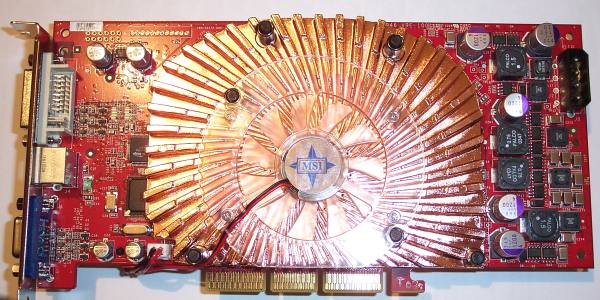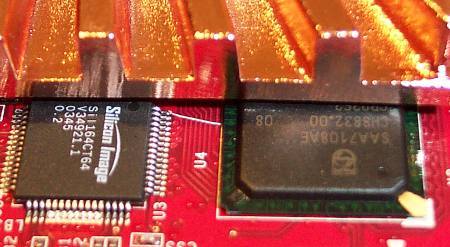Card appearance

MSI's GeForce FX 5950 Ultra 256MB looks very, very similar to the FX 5900 Ultra version we reviewed some time ago. We're glad that MSI hasn't adopted the PCI slot-blocking design that the reference design adopted. Cooling a 475MHz NV35 core is no mean feat with a single-slot design. MSI's large cooler works primarily on the principle of heat removal via a large surface area. The cooler also covers 128MB (of 256MB) of top-mounted Hynix 2ns memory that's rated at a whopping 1GB/s.

There's no getting away from the size of the card, it's positively huge. That's perhaps why MSI has decided to locate the molex connector perpendicular to the PCB. In a regular case the card comes close to interfering with the placement of a hard drive, such is its length. It's length may also preclude the installation or release of RAM if the card is in the AGP slot.

MSI's cooling philosophy extends to the back of the card. The majority of the heat produced by a GPU is limited to the top side but card designers often choose to forget about the effects of a hot GPU on the rear of the card. MSI uses a similar fan as found on the front and a larger U-shaped heatsink to cool the toasty 128MB BGA memory running at 950MHz. The coolers are difficult to remove due to the lack of space surround the plastic pins pushed through the front of the card. The wealth of copper gives the card a weighty and reassuring expensive feel.

Back to the front. The oversized cooler partially obscures two useful ASICs. Silicon Image's chip, on the left, is used for DVI duties and can output up to XGA resolution. The Philips 7108AE VIVO ASIC provides both Video-In and TV-Out functionality. Just this addition is enough to raise it above some of the more generic offerings which focus on price alone.

The only remarkable aspect here is the S-Video socket that receives and exports signals. NVIDIA cards usually choose to have the VGA connector on the left. ATI's favoured position is the exact opposite.









